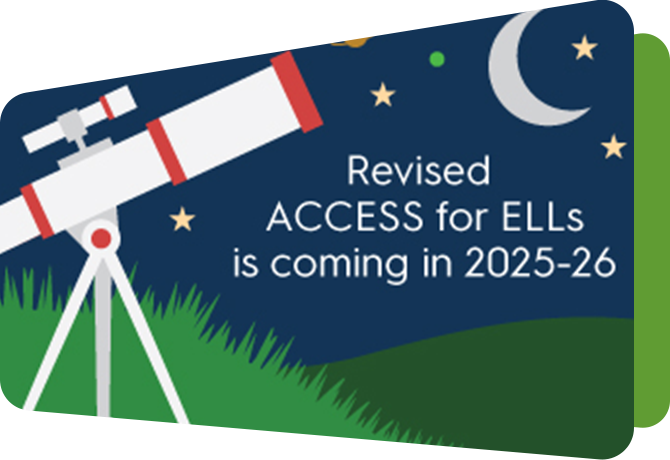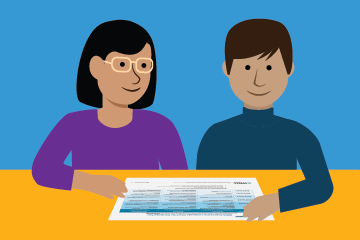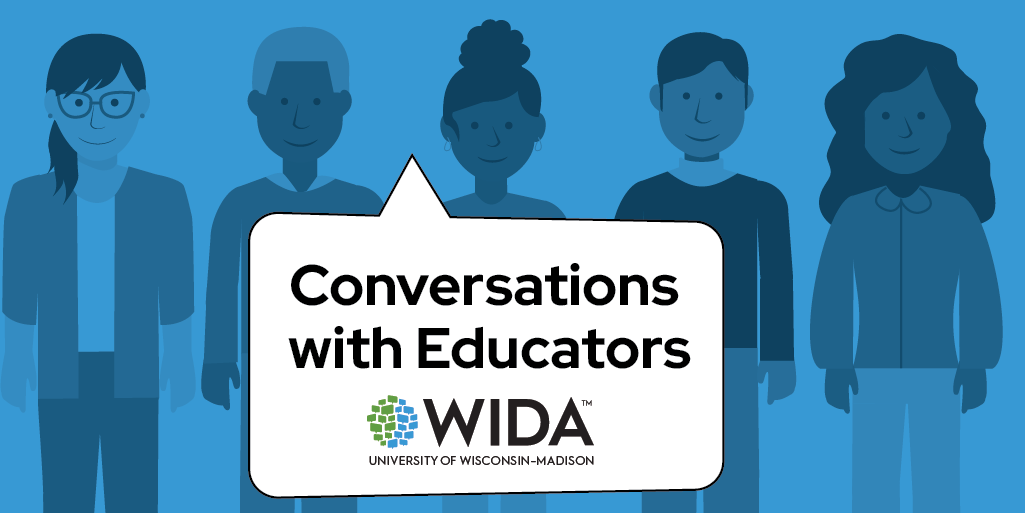This WIDA Snapshot introduces informar, the second Key Language Use of the Marco de los estándares del desarrollo auténtico del lenguaje español de WIDA (Marco DALE), WIDA’s Spanish language development framework. Informar supports students’ ability to convey factual information in a clear and organized way. This is the second in a four-part series of WIDA Snapshots on the Key Language Uses of the Marco DALE: relatar, informar, explicar and argumentar.
The Marco de los estándares del desarrollo auténtico del lenguaje español de WIDA (Marco DALE) adopts the Key Language Uses from the WIDA English Language Development Standards Framework, 2020 Edition, as the organizing component that connects linguistic development with academic learning. Among these Key Language Uses, informar (in English, inform) highlights the essential purpose of language in conveying and organizing information clearly and effectively. information clearly and effectively.
What does informar allow students to do?
The Key Language Use informar focuses on the use of language to provide information and communicate ideas, concepts or phenomena in an organized and understandable manner. This allows students to develop essential skills for managing and communicating knowledge effectively. Through informar, students can define and describe concepts or ideas accurately; identify similarities and differences when comparing observed or abstract phenomena; and organize, categorize and classify information to interpret relationships and construct useful generalizations. Here are some examples of how students may engage with this Key Language Use:
In a science class, students may describe the characteristics of an ecosystem and how the different elements interact to maintain environmental balance.
In a history class, students may analyze the key events that led to a revolution by organizing them in a chronological sequence that facilitates understanding.
In a math class, students may detail the steps necessary to solve a problem and classify possible solutions based on their characteristics.
As demonstrated by these examples, informar helps students structure information clearly, promoting deep and meaningful learning across multiple disciplines.
How can informar be integrated into practice?
In the classroom, students may utilize informar when writing informative texts. This type of writing prepares students to interact meaningfully with curricular content by guiding them to interpret and articulate information and ideas in a logical, coherent sequence. One example of an informative text is the recording of data and description of patterns found in experiments, investigations or readings using context-appropriate technical language to represent observations. In a science class, a student may observe the growth of a plant and record data over a week, then describe the results of their observation using graphs with specific terms.
Additionally, teachers can guide their students to build generalizations by helping them analyze collected information, identify common patterns and write conclusions that transcend their individual experiences. Tools such as graphic organizers, diagrams or comparative tables are especially useful in helping students establish connections between ideas, concepts or phenomena. These instructional practices not only strengthen students' communication skills but also enhance their ability to think critically, analyze information and apply it in various academic and sociocultural contexts.
How does informar relate to other Key Language Uses?
Like other Key Language Uses, informar does not stand in isolation. It intertwines with and complements other Key Language Uses, enriching learning in various disciplines. For example, students may combine the Key Language Uses relatar and informar to integrate information into the narration of historical events or the description of relevant places, adding context and detail to the narratives. Similarly, they may combine the Key Language Uses explicar and informar and use provided information as foundation to construct explanations about how and why certain phenomena or processes occur. Likewise, students may combine the Key Language Uses argumentar and informar by using data and facts they gather to support their claims and strengthen evidence in an argument. In a language arts class, students may use informar to inform about the main elements of a novel. At the same time, they may explain how the characters' conflicts reflect universal themes and narrate a specific passage from the story to illustrate their analysis. These connections demonstrate that informar is not only essential for conveying information, but also for complementing and strengthening other Key Language Uses in academic and sociocultural contexts.
How does informar relate to Language Expectations?
The Key Language Use informar gives students a clear purpose for language use and supports their ability to convey factual information in a clear and organized manner. The Language Expectations (las expectativas del lenguaje) of the Marco DALE add specificity to the Key Language Uses:
Language Expectations establish goals for learning based in the curricular content. These are built around a set of Language Functions.
Language Functions (las funciones del lenguaje) are common patterns of language use that showcase particular ways students might use language to meet the purposes of schooling.
Language Features (los recursos lingüísticos) are examples of various characteristics of language that language users rely on to carry out particular Language Functions (e.g., types of sentences, clauses, phrases and words).
Together, the Language Functions and Language Features show some of the ways language works in content learning, organized around the four Key Language Uses.
In conclusion, informar is a fundamental pillar for connecting academic learning with students’ realities. Through this Key Language Use, students develop essential linguistic skills to collect, process and present information clearly and precisely, allowing them to actively participate in interdisciplinary discussions and learning experiences. Additionally, through integration with other Key Language Uses, educators not only enhance their students' linguistic competencies, but also foster deeper, contextualized and meaningful learning. The Key Language Use informar transcends the mere transmission of facts; it is a gateway to understanding, interpreting and sharing the world meaningfully.





